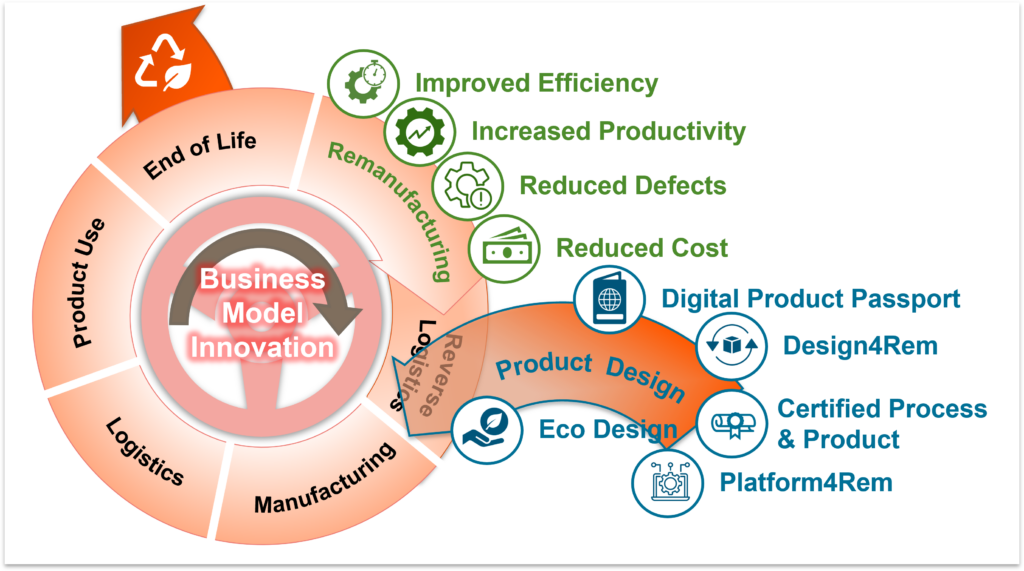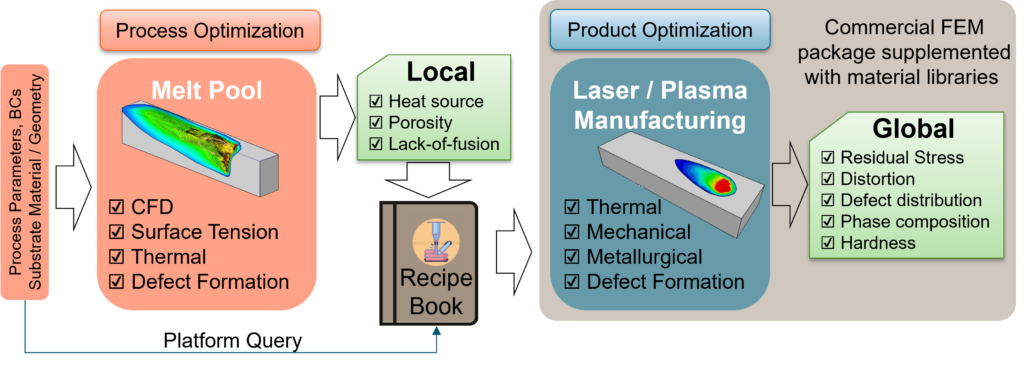The project is funded within the Horizon Europe program (HaDEA) with Project ID – 101138775
The circular economy is an economic system that aims to reduce waste and maximize resource use by keeping materials in use for as long as possible. This is achieved by reducing, repairing, reusing, remanufacturing, and recycling products. The goal is to create a closed-loop system where materials and products are reused or repurposed instead of discarded. As the global population grows and resources scarcer, circular economies become increasingly critical for sustainable development. By 2030, they could unlock USD 4.5 trillion in global GDP growth and offer solutions for boosting resilience, supporting communities, and achieving the UN Sustainable Development Goals.

Remanufacturing is critical in circular economies, as it extends product life, creates jobs and revenue streams, and reduces waste, energy consumption, and greenhouse gas emissions. Since the Industrial Revolution, a circular economy has been the most promising opportunity to transform production and consumption. Three innovations are needed to successfully implement remanufacturing in an industrial value chain or, more appropriately, value cycle: Product, Process, and Business Models.

Product innovation: Modular products that can be reused, repaired, or recycled are essential for remanufacturing. This approach reduces waste and improves resource efficiency. It involves innovative thinking, employee training, department cooperation, external partners, novel tools, and digital infrastructure.
Process Innovation: Remanufacturing is an advanced repair technique that combines subtractive and additive manufacturing processes. Subtractive processes, like machining, can effectively remove damaged or worn material from a component. Additive processes such as 3D printing or laser-cladding can rebuild the product/component to its original dimensions by depositing new material. This unique combination of subtractive and additive processes is highly effective at repairing high-value components, including engine blocks, turbine blades, and gears. Additive remanufacturing technologies like hybrid laser-PTA-cladding and DED-LB are highly efficient, versatile, and precise. They also have a low waste rate and enhanced durability. Furthermore, these processes can be automated, which increases consistency and lowers labor costs.
Business model innovation is vital to remanufacturing because it requires changing the entire value cycle, including how products are marketed and sold to customers. However, only 18% of companies have successfully engaged in business model innovation. This is incredibly challenging for large corporations in conservative industries. Companies must invest time and resources in changing their value systems and internal procedures to succeed. This includes educating customers and reversing deeply ingrained consumption habits.

Within RESTORE, Aerobase Innovations AB will develop state-of-the-art material models for producing metallic components. We will lead the work package to create advanced material models, perform thermo-mechanical simulations, and optimize various cladding processes. The project is funded by the European Health and Digital Executive Agency (HaDEA) [See Project Description: https://cordis.europa.eu/project/id/101138775]
The European Federation for Welding, Joining and Cutting (EWF) coordinates the project. The partners include Technovative Solutions LTD (TVS), IRIS srl, Fraunhofer SCAI, AB DALFORSÅN, NAVTEK Naval Technologies Inc., Lucchini Unipart Rail Ltd, Welding Alloys Group, IREPA LASER, Inventage AG, Parida Consulting AB, GSMC, flowphys as, Endurance Technologies Ltd., Stellantis/CRF, Svetsdoktorerna, Cranfield University, MSC Scanning, EIT Manufacturing, and Intellegens Limited.
Connect 🔗contribute.
Are you interested in learning about RESTORE or participating in its various phases? Please contact us and share your thoughts.

